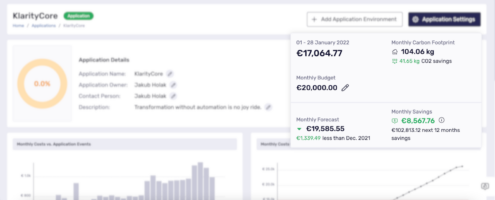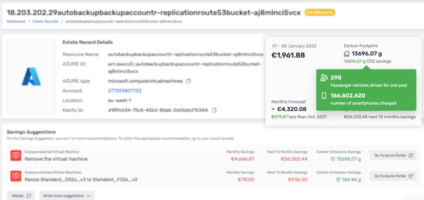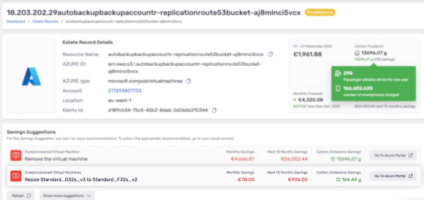
Identify and reduce your cloud carbon footprint
Embed sustainability into your daily IT operations and join our GreenOps revolution. IBM Multicloud helps to reduce your environmental impact and optimise your cloud usage, by providing cloud carbon footprint estimation and identifying rightsizing opportunities.
Sustainability of your cloud workloads
Most enterprises are aiming to reach net-zero carbon emissions due to government regulations, which forces them to have strict governance over their emissions. The scale effect of cloud computing can have a significant influence on the environmental impact of your company’s IT workloads.
Better resource sharing via cloud multitenancy reduces carbon footprint, and sustainability can be a natural and substantial side effect of migrating your workloads to the public cloud.
Sustainability pillar
It’s about testing the cloud in a secure way, not using guesswork.
AWS recently introduced sustainability as another pillar of the Well-Architected Framework. The shared responsibility model also applies to sustainability – the provider is responsible for the sustainability of the cloud, while customers are responsible for sustainability in the cloud.
"We are introducing the new Sustainability Pillar to help organizations improve their sustainability in the cloud. This is a continuous effort focused on energy reduction and efficiency of all types of workloads.
In practice, the pillar helps developers and cloud architects surface the trade-offs, highlight patterns and best practices, and avoid anti-patterns.
For example, selecting an efficient programming language, adopting modern algorithms, using efficient data storage techniques, and deploying correctly sized and efficient infrastructure. " - AWS News Blog
Embedding Green into your Ops
What can you do to understand your current cloud carbon footprint? How can you quickly identify actions to reduce your carbon footprint and act on those recommendations?
Visibility of current environmental impact is a crucial first step before optimization and rightsizing. Public cloud adoption to be successful needs to come with organizational alignment, and GreenOps feels like a natural partner of FinOps – both are very dependent on your ability to identify resource ownership and map cloud usage to the business you run.
IBM Multicloud Accelerator users can see the estimated carbon footprint of their AWS workloads, and even more – identify the level of emission reduction that can be achieved based on IBM Multicloud Accelerator Saving Suggestions.
When you go to the application view, next to the infrastructure cost, you can see its estimated monthly carbon footprint.

You can drill down and check the amount of CO2 emission estimated for a particular resource…

…and even more – you can identify how the saving suggestions could reduce the impact on application and resource level.

Methodology
Estimating public cloud carbon emissions can be challenging, due to limited data points available – IBM Multicloud team decided to follow the methodology introduced by Etsy. We have built our implementation based on the following open source solution – https://www.cloudcarbonfootprint.org/. We estimate the carbon footprint of particular resources by calculating energy usage with estate and billing data, and factoring in the power usage effectiveness of particular regions, availability zones and data centers.
Dive deeper into the methodology – https://www.cloudcarbonfootprint.org/docs/methodology
Our mission is multi-cloud and in the future, both Azure and Google Cloud and their respective carbon emissions will be displayed in IBM Multicloud Accelerator.
Get in Touch.
Let’s discuss how we can help with your cloud journey. Our experts are standing by to talk about your migration, modernisation, development and skills challenges.






